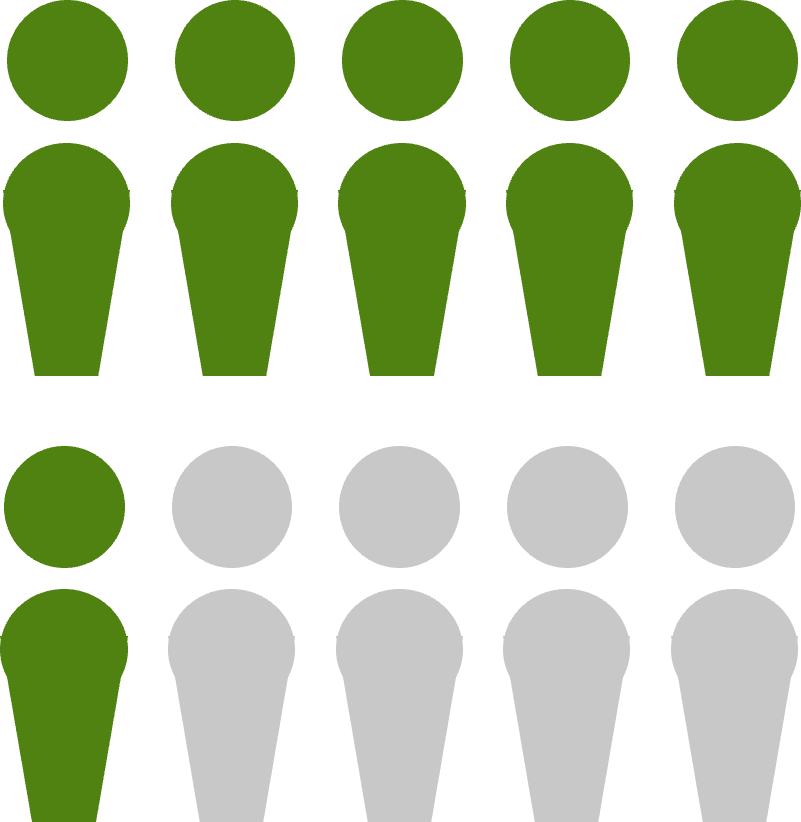Gender identity and sexual orientation
Gender identity
 Close to 6 out of 10 students identify as a woman
Close to 6 out of 10 students identify as a woman
- Nearly 55% of student respondents identify as women and approximately 44% as men. This represents a variation from previous results in which 58% of respondents identified as women and 33% of respondents identified as men. The representation of women in the university populations of Canada stands at 58%. In Quebec, the percentage is 59%.
- 4% of respondents identify as neither men or women.
- 60% of respondents who are members of 2SLGBTQIA+ communities identify as women.
- Nearly 45% of graduate student respondents identify as women.
Gender-diverse community
- 7% of census respondents identify as a trans person or a member of a gender-diverse community. The proportion is slightly higher among students in the Faculty of Arts and Science (9%), and much higher among students in the Faculty of Fine Arts (18%) and those pursuing interdisciplinary studies (29%).
- Conversely, the proportion is lower among graduate students (4%), students studying in the Gina Cody School of Engineering and Computer Science (3%) as well as the John Molson School of Business (1%).
- 23% of students who live with a disability or impairment also identify as members of a gender-diverse community. This is a much higher proportion than for the Concordia population as a whole (7%).
- Concordia seems to have a well-represented gender-diverse community among its student population when compared to the Canadian (0.33%) and Quebec (0.23%) populations.
Sexual orientation
- Among Concordia students, 26% identify as a member of 2SLGBTQIA+ communities with respect to sexual orientation. This represents a notable increase compared to the 2022 results (23%) and surpasses the national average of 4% within the Canadian population.
- At Concordia, the proportion of students who identify as members of 2SLGBTQIA+ communities are also more represented in part-time studies (30%). A significant proportion of the respondents also identify as an Indigenous person in Canada (42%), reported a disability (56%), and/or are students in the Faculty of Arts and Science (35%), the Faculty of Fine Arts (51%) or interdisciplinary studies (54%).
- On the other hand, members of 2SLGBTQIA+ communities are underrepresented among graduate students (15%) and in the John Molson School of Business (11%) or the Gina Cody School of Engineering and Computer Science (10%).
- The majority of Concordia students define their sexual orientation as straight (62%), a similar pattern to what is observed in Canadian universities (62%). However, there are fewer heterosexual respondents than recorded in 2022 (69%). Students in the John Molson School of Business or Gina Cody School of Engineering and Computer Science were more likely to identify as straight (77% and 74%, respectively).

| Legend | Sexual orientation | Percentage |
|---|---|---|
| Members of 2SLGBTQIA+ communities | 26% | |
| Straight (heterosexual) | 62% | |
| Prefer not to answer | 12% |

